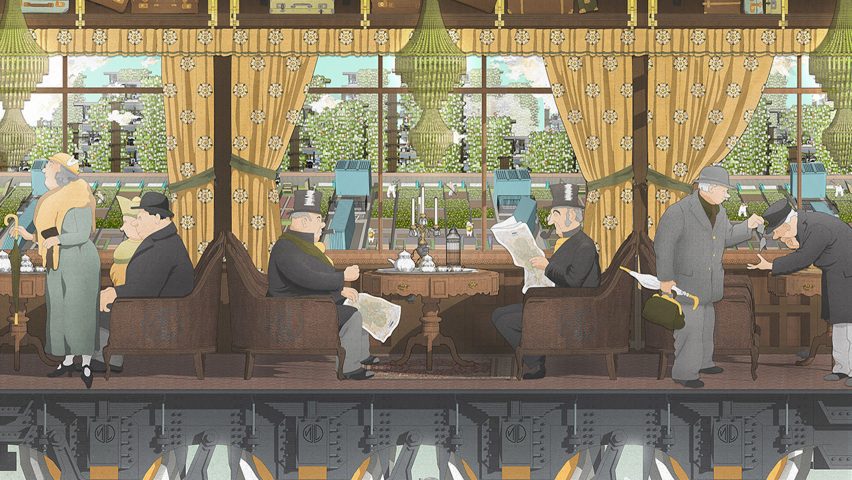
Elliott Bishop tells "cautionary tale" of privatisation with fictional Nestlé-owned city
The English city of York is transformed into a giant Nestlé sweet factory in this concept by Bartlett graduate Elliott Bishop, set in a post-Brexit Britain.
The Sweet Proposal: A Cautionary Tale of The Corporate City explores how a city could function as a private and politically autonomous economic zone.
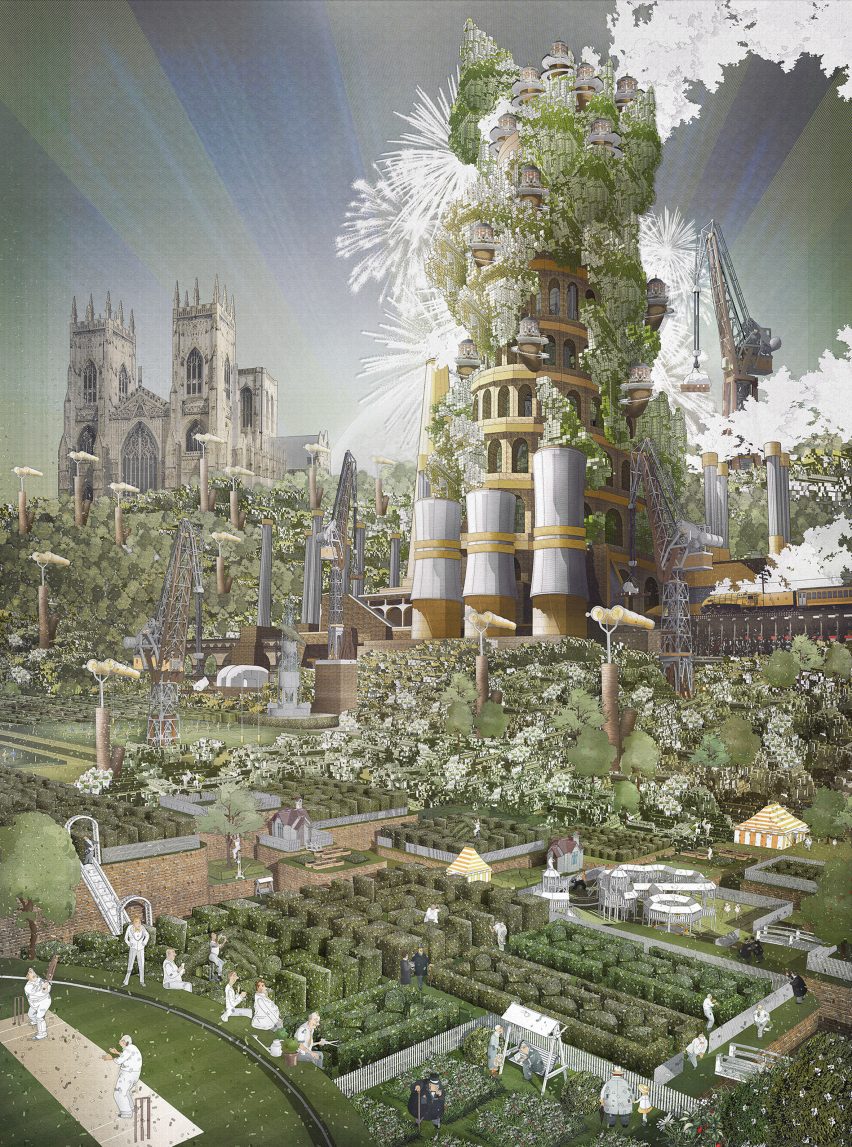
Bishop imagines York – a city that confectionary brand Nestlé already has a strong presence in – converted into a vast self-sufficient machine dedicated to growing, manufacturing and shipping produce.
In exchange for lifetime employment opportunities for residents the zone is granted political autonomy, with Nestlé executives controlling governance, homes and eating habits of their subjects.
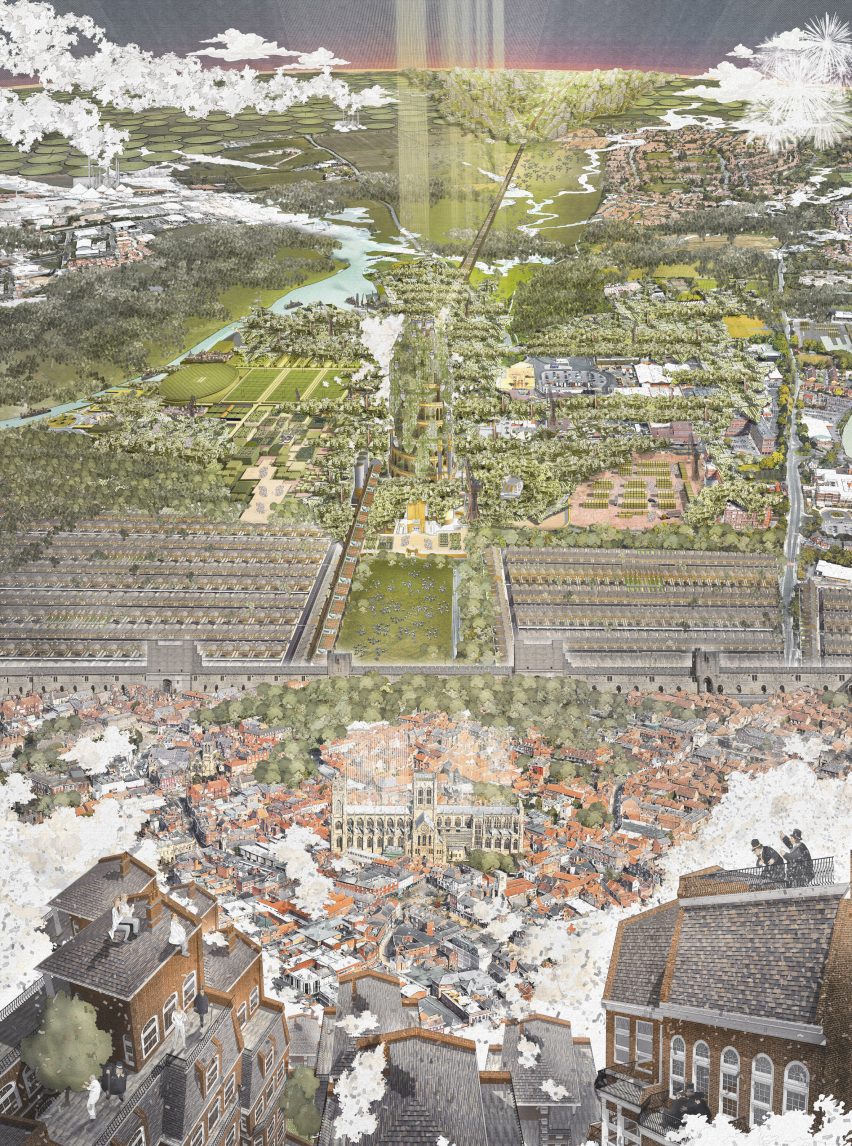
Bishop describes it as a "dystopian corporate utopia".
"The Sweet Proposal of Nestlé's New York, is a satirical cautionary tale of a corporate city-scaled confectionary factory, a critique of city privatisation where the largest corporate infrastructures control our employment, governance, housing and nutrition," he wrote in his thesis.
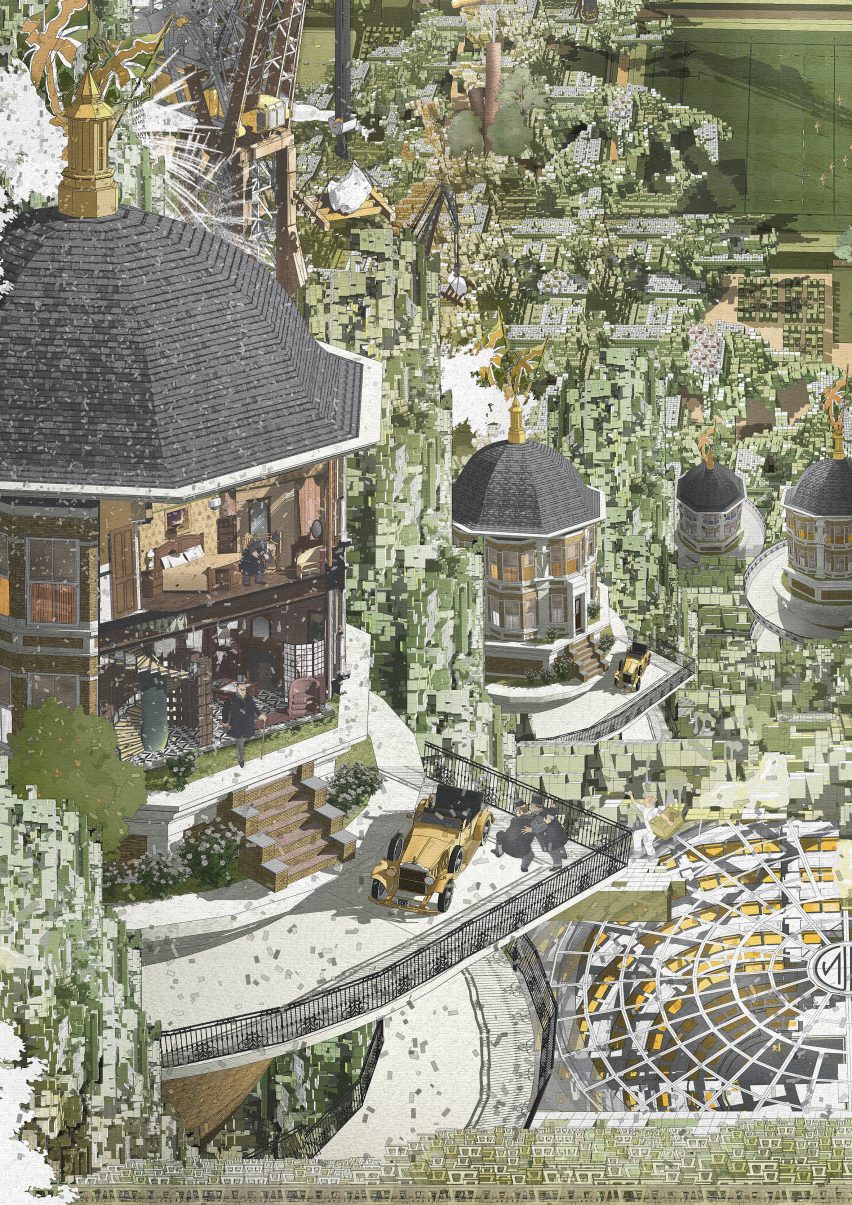
"The project converts the city of York into a dystopian corporate utopia vailed in a facade of sweet respectability," reads the description. "[It is] devoted to the production of confection to be exported to Europe, as a new type of corporate colonialism in a post-Brexit Britain."
Bishop developed the proposal as his final-year project for Unit 10 at The Bartlett School of Architecture in London, which is led by Simon Dickens and CJ Lim.
Students on the programme are asked to imagine a fictional construct and present it through a series of intricate, large-scale drawings. Previous examples include a pilgrimage destination to rebrand China and an Israeli city that promotes peace through water management.
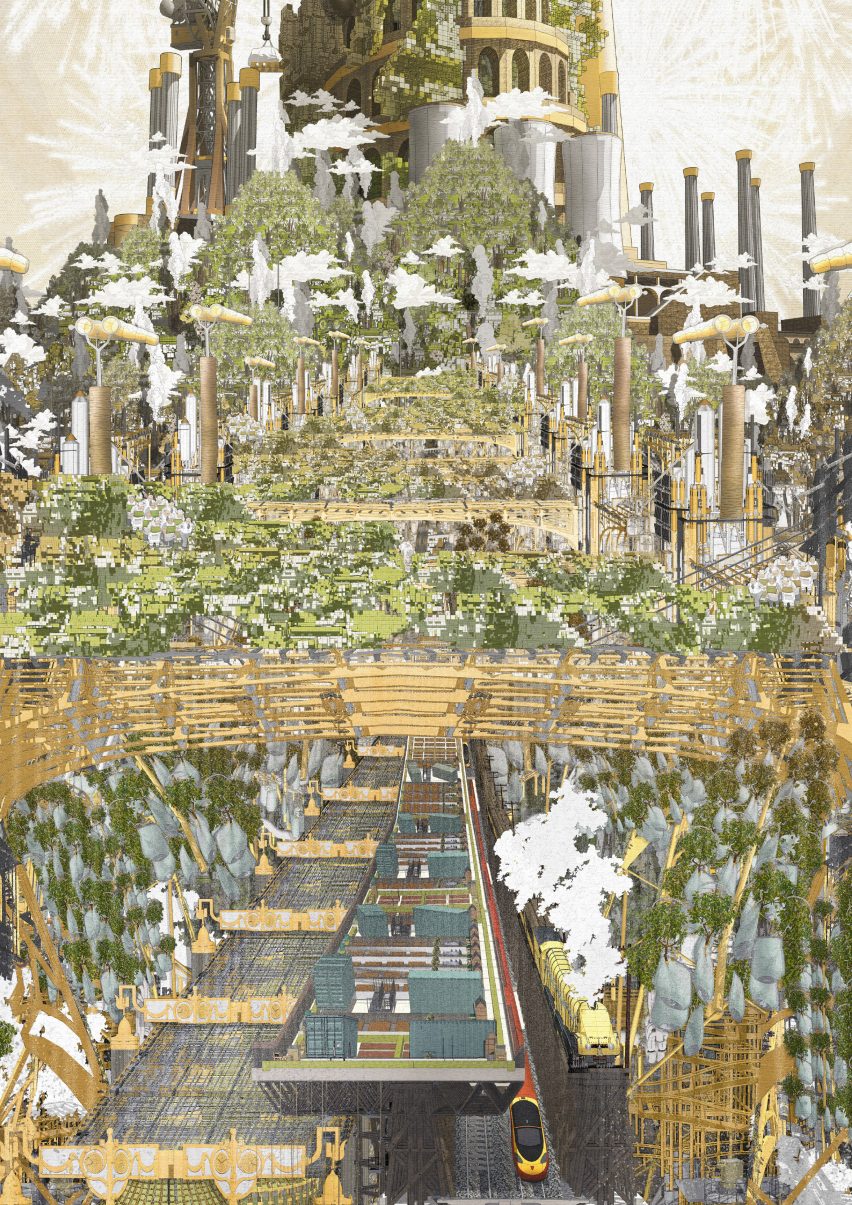
Bishop's project takes inspiration from The Great Gatsby, the novel by F Scott Fitzgerald that is set during the economic boom of the 1920s. The designer relates characters from the tale to his fictional Nestlé-run city, with residents presented as powerless against the greed of the company.
"The story has been interpreted as a critique of capitalism and modern paternalism of company towns, described between the relationships of the dependant Gatsby who is represented as the employees, to his selfish love Daisy, the company," he explained.
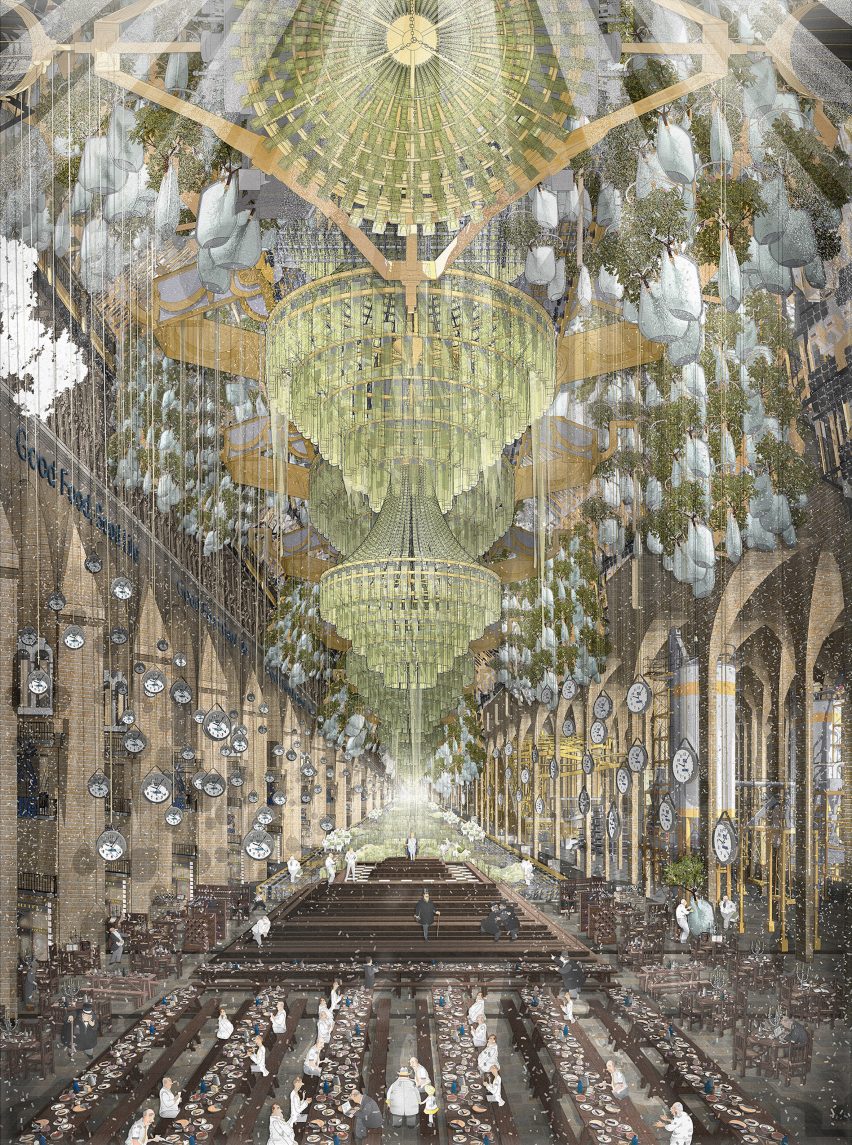
Key elements of the self-sufficient factory plan, which Elliot shows in his drawings, include high-rise dairy farms, facilities to produce sugar, cocoa and gelatine, and a chocolate cathedral.
This "cathedral of capitalism" operates as the government's headquarters. It has a tiered design based on Dante's Inferno, with a cattle slaughterhouse in its base.
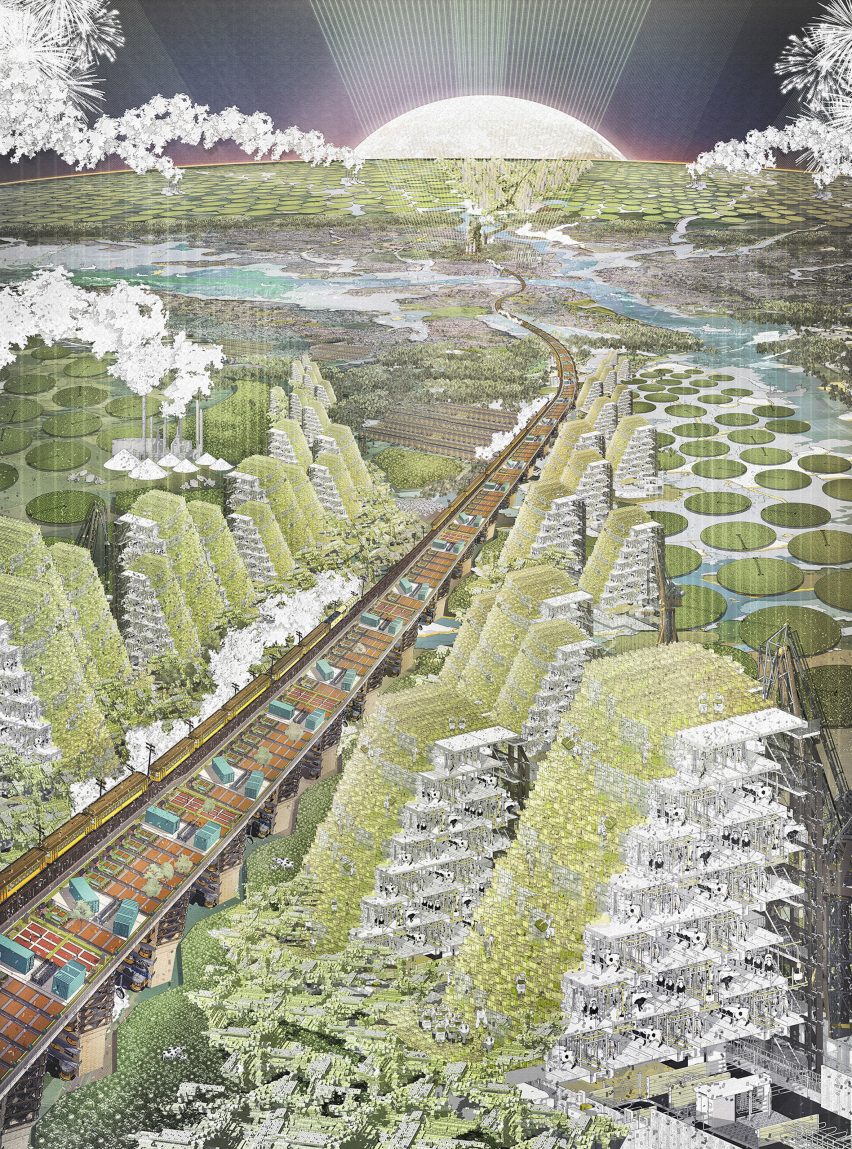
A railway line travelling along Constable Way offers a scenic approach to the city that masks its mass-production facilities, with the high-rise milk farms veiled in greenery to create artificial hills that block views to the sugar beet fields beyond.
This segment of the plan is modelled on the high-speed railway, HS2, which is planned to pass through the picturesque Yorkshire Dales.
"The project provides a service of ethical accountability, holding a mirror up to society using architecture as a medium to philosophically to highlight the loss of control and our true freedoms," said Bishop. "The aim of the project is provoke the question, 'Is the privatisation of cities right for society?'"
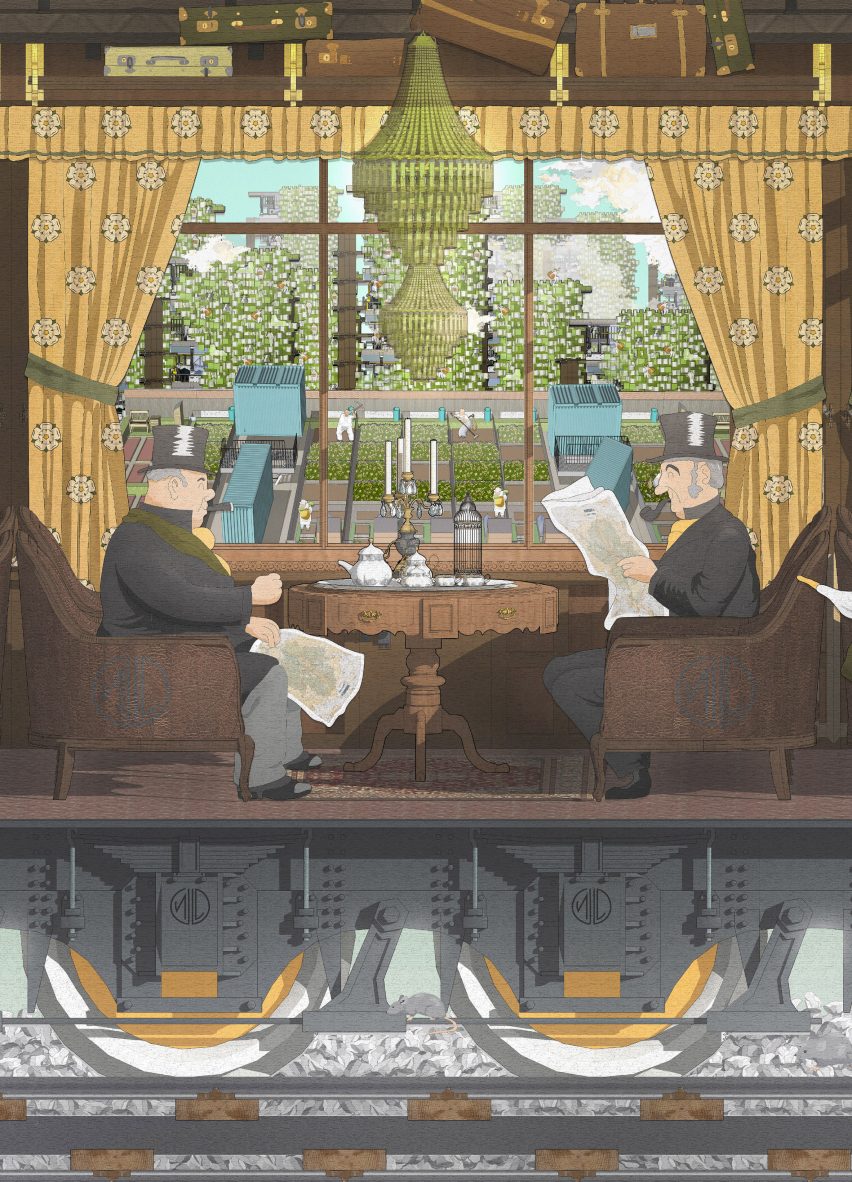
Britain's impending exit from the European Union has brought with it a raft of proposals from architects and designers, from highly conceptual proposals to tools for activism.
Creative agency Superimpose Studio launched a suite of anti-Brexit billboards across the UK earlier this year, while artist Asmund Havsteen-Mikkelsen sunk a model of Le Corbusier's Villa Savoye as a comment on the vote to leave.